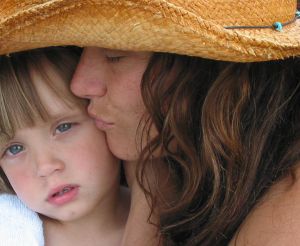Fevers are not fun. If you think your baby has a fever, kiss his or her forehead. If it’s very hot then you’re probably right about baby having a fever. Fevers are the sign that the body is fighting an infection. Use a thermometer to determine the exact temperature. It’s advisable to check your baby’s temperature before they get sick to have an idea of what their base temperature is. The average healthy baby temperature is anywhere between 97 and 100.4 degrees. Some babies run hot and some run cold. It’s good to know what your baby’s base temp is.

For example, my daughter’s base temperature is 97.1 just like me. A 100-degree temperature is a sign of a fever and while for some children that’s not high, it is high for her. At 100.4, I feel pretty rocky and out of it. I can become disoriented and sick to my stomach. At 102, I am lethargic and want to do nothing but shut down and sleep. A baby whose base temperature is 99 may not experience similar symptoms until their temperature is appreciably higher.
If you believe your baby is ill and that the temperature is high, call your doctor. You are the best judge of a right time or a wrong time. If you feel they are sick or that their behavior is indicative of something wrong, then call the doctor. A baby under 3 months with a fever definitely should go to the doctor or the emergency room depending on the time of day. Remember that the average person’s temperature rises in the late afternoon and early evening and drops in the middle of the night. This is normal for most everyone.
When you call the doctor about a fever, it’s good to know what the temperature is and how you determined the temperature (i.e. rectal, under the arm or ear thermometer). If you checked it twice over a period of time, be sure to indicate to the doctor when you checked it and what circumstances you checked it under.
You need to be prepared to give the doctor a list of any other symptoms as well as if you gave them any medications such as Tylenol, Motrin or if they are already being treated for a pre-existing condition. Do not discount any symptoms as you list them for the doctor whether it’s a runny nose, a cough or spots appearing somewhere on the body.
Ear infections are also something to watch out for. If the baby pulls at their ear, cries when laid down or vomits after laying down for any length of time: it could be indicative of an ear infection. When my daughter was 11 months old, she had raging ear infections in both ears and no fever. We determined the ear infections after a night of having to hold her upright so she could sleep and profuse vomiting.
Fevers are great warning signs, but the lack of a fever can distract parents from identifying real problems. Be sure to keep track of any habits your child develops with their illnesses. For example, if they do not run fevers with ear infections. Your pediatrician needs to be aware of this especially for diagnosing future problems.

